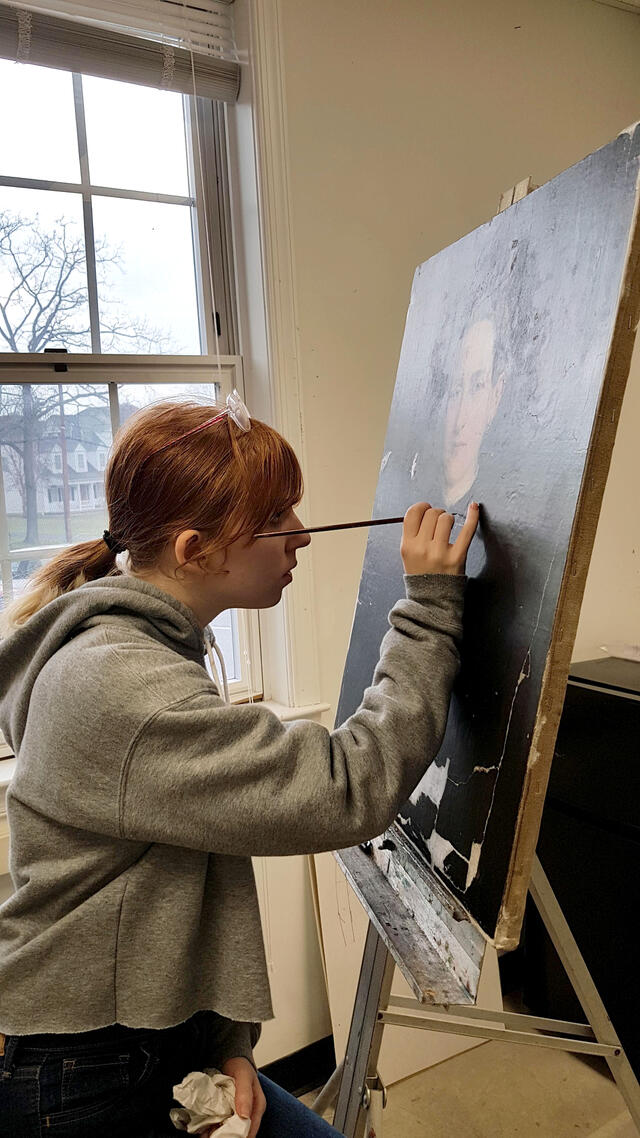Hands-On History
Students restore 19th Century painting under the guidance of art conservator and faculty member Katya Dovgan.
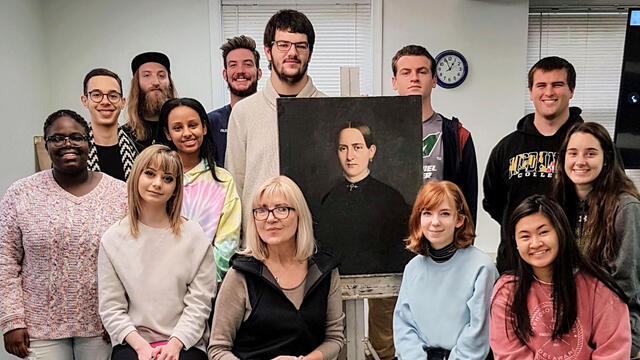
Imagine you have come across a portrait from the 19th Century. It’s signed and dated by the artist, “G. Stewart” in 1882. The European-style painting depicts a modestly dressed young woman, but the portrait has seen much better days. It’s dirty, it’s literally torn to pieces with large chunks of canvas missing, and as a collector, you don’t have the skills or knowledge to be able to restore the piece to its former glory.
That’s where Senior Lecturer of Art and Art History Katya Dovgan comes into the picture. In addition to teaching and her own work as an artist, Dovgan is also a trained art conservator and has a small business restoring artwork for galleries, collectors and private citizens.
“The Portrait of the Lady was brought to me through a gallery here in Westminster,” Dovgan says. “A private citizen had bought it at an auction. The customer said to me, ‘The portrait is nobody to me. I just thought it was a nice portrait, it’s old, it’s dated and signed. But I don’t really want to go into the investment to conserve and restore, so maybe your students can work on it one day.’”
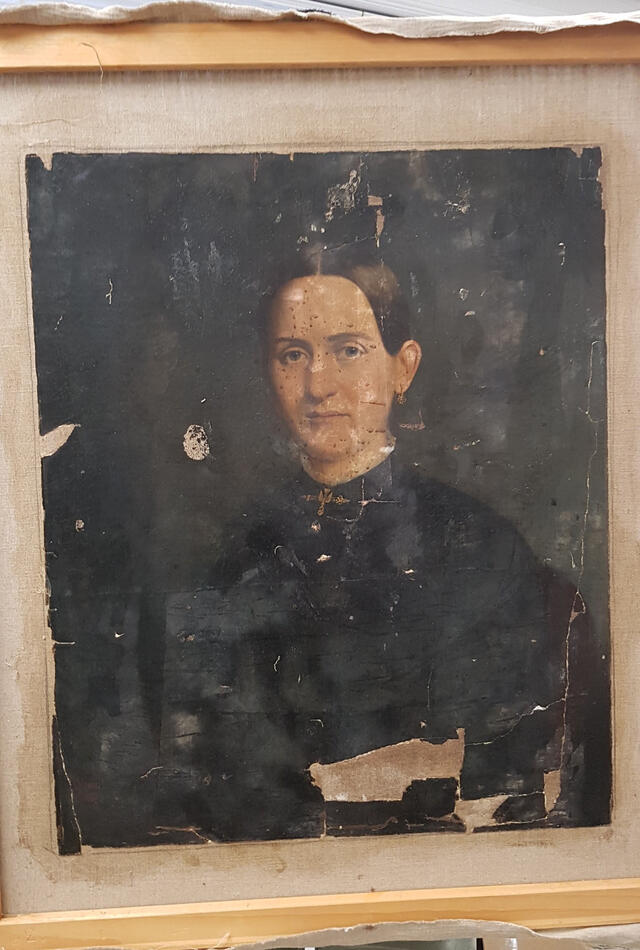
Dovgan’s collection of pieces that have been donated to her for this use continues to grow. Dovgan’s Basics of Art Conservation class was offered for the first time in Spring 2019, but she’d wanted to offer it for many years. Taking risk and ethics into account, she knew she could not have untrained students working on a piece that a client would be paying her for, so it took the right pieces being donated for the sake of education. That first semester, students worked on a large tapestry. In Fall 2019, her students turned their attention to The Portrait of the Lady.
“When the portrait first came in, it was in this really brittle condition,” says junior Art History major Patrick Hardy. “You could break it by hand. But now it’s flexible, it moves. At the beginning of the semester, I didn’t think there was any way we could have this thing restored. But now it’s done. I loved playing a part in these works and extending their lives.”
"At the beginning of the semester, I didn’t think there was any way we could have this thing restored. But now it’s done. I loved playing a part in these works and extending their lives.”
Dovgan and Hardy emphasize the need for patience throughout the process — for both students and teacher.
“You want it to be easy and go as expected, but there are always surprises,” Dovgan says. “Sometimes you have to work the same process two, three, even five times because the piece doesn’t respond immediately to the effort.”
As Dovgan explains it, the process has multiple steps, but begins with the all-important conservation. She likens it to the motto of “do no harm” in medicine. “We have to first conserve any artwork to prevent future deterioration,” she says.
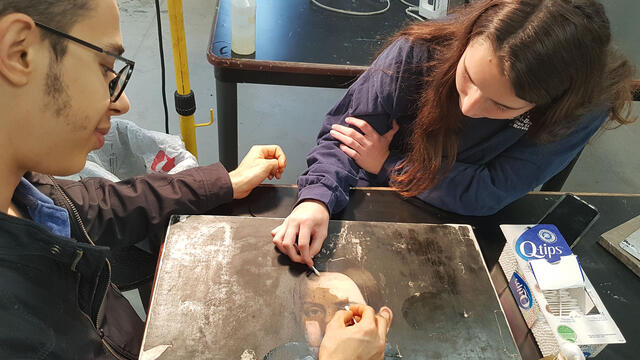
Next comes structural restoration, which in the case of The Portrait of the Lady, involved attaching the torn canvas to cotton to support the holes and rips, taping some of the holes to hold it all together, and using materials like sturgeon glue and bee’s honey to make the piece pliable and easy to work with. The technical restoration step had students cutting out inserts of canvas with a similar texture and weave as the original so it would look smooth and straight. The portrait was aligned on a new, fine Belgian linen before the final steps of cleaning, painting to fill in the holes, varnishing and touching up.
Freshman History major Stephanie Eckard lucked out, snagging the last seat in the class. “There was one seat left and it was perfect because I really want to work in art museums,” she says. “I remember arguing for a few days about the first initial in the signature, whether it was a G or a J, because it was torn. We felt like detectives a little bit.”
The students’ hands-on conservation work was supplemented throughout the semester with videos about major art conservation projects around the world, a partnered portrait assignment and reflection journals. Since the piece was smaller, not all of the students could be working on it at the same time, but the cumulative work of the class was worth the wait. Even if the mystery of G. Stewart is never solved, the portrait has been restored to a beautiful piece once again.
Dovgan says that if her students don’t go into art conservation — and with a mix of majors ranging from Art and Art History to Computer Science, Chemistry and Biology, it’s unlikely many will — she hopes that they learn to think more in-depth and see the world with different eyes.
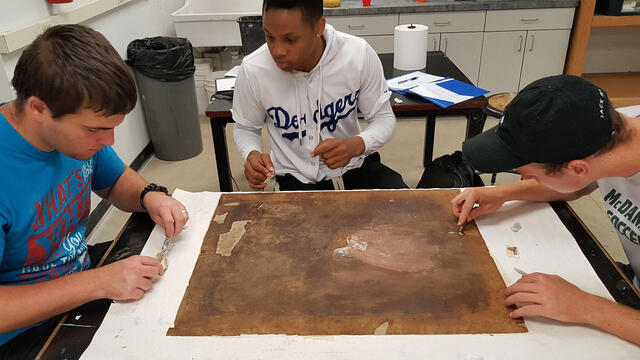
“It was an extremely creative class in a way you probably don’t think it would be,” Eckard says. “I’m never going to be able to go to another museum the same way again.”
After the class was offered last spring semester, many students told their friends about it so they could enroll when it was offered again. That’s how Hardy learned about it. Many people in his life have told him they could see him working in museums, but he never knew what he would do. Dovgan’s class showed him a new passion, and he’s now considering a career in art conservation.
“The kids responded so warmly to the class, and that was one of the greatest surprises,” Dovgan says. “It turned out to be an incredibly rewarding experience. Gretchen McKay was instrumental in encouraging me and pushing me to offer the class. I’m terribly grateful to her.”
